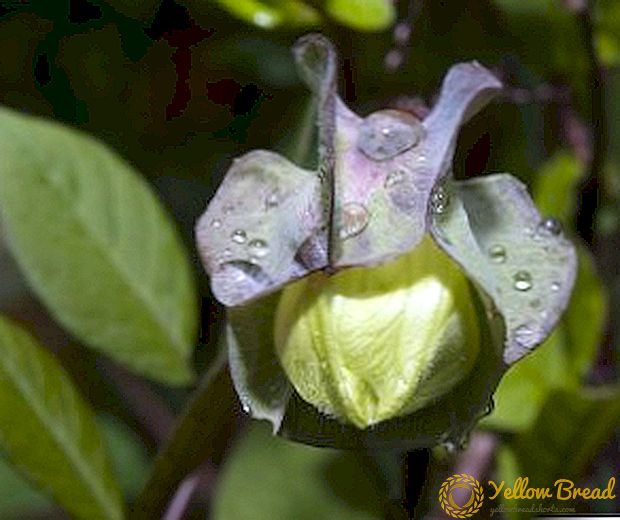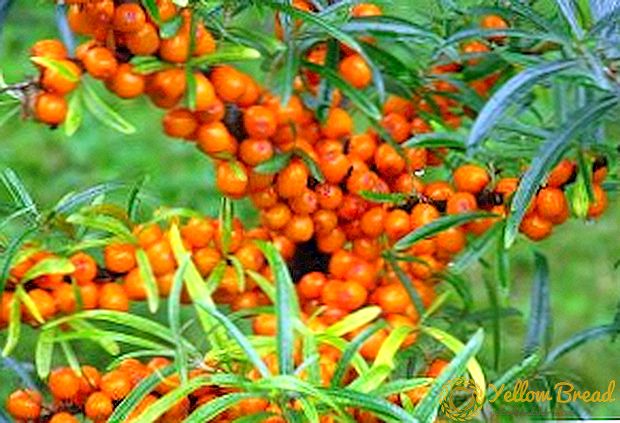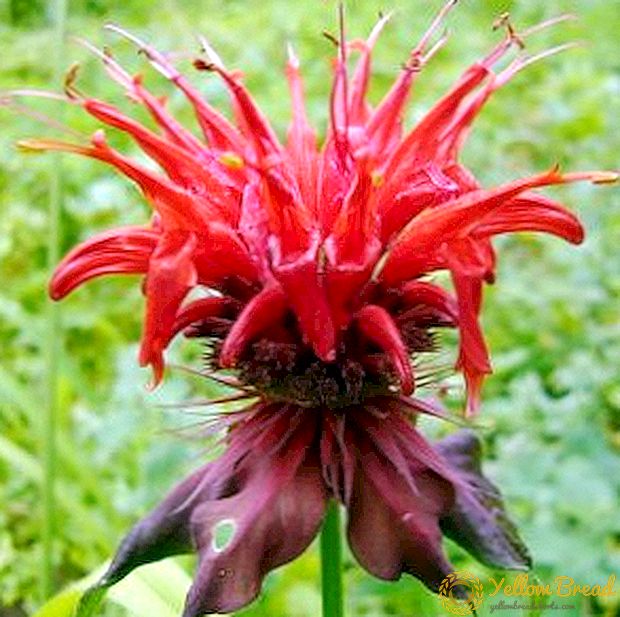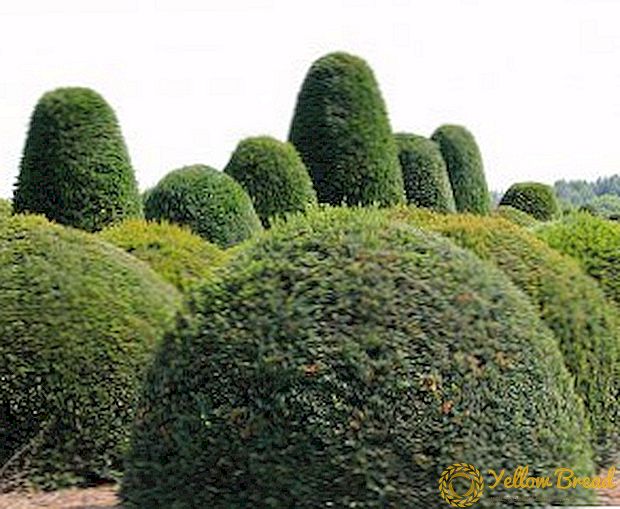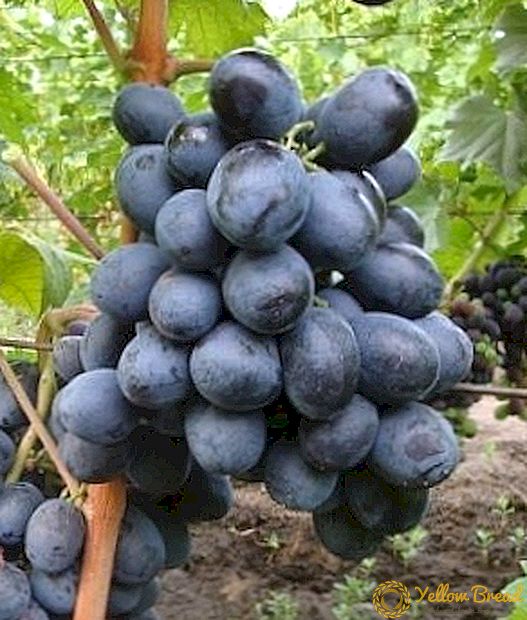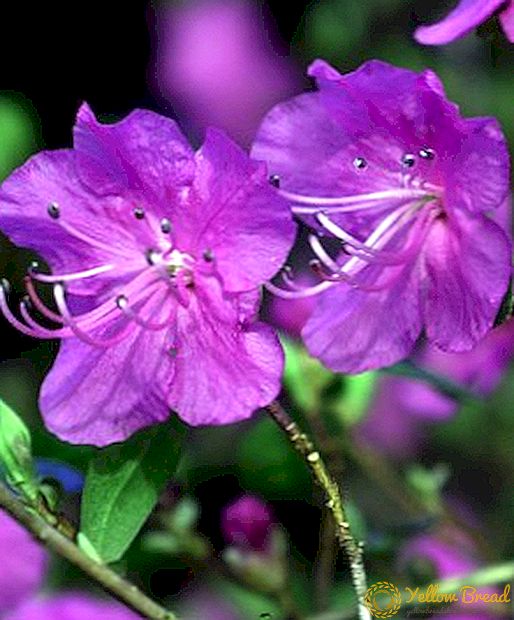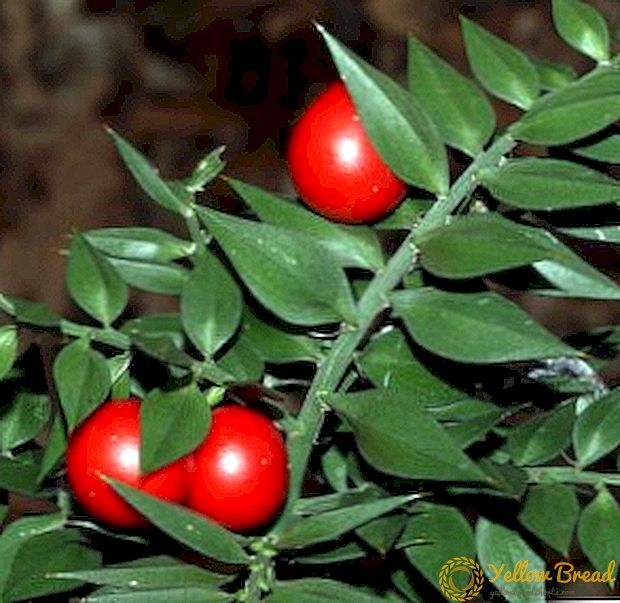 Iglitsa is not too popular among flower lovers and is quite rare at home.
Iglitsa is not too popular among flower lovers and is quite rare at home.
Nevertheless, this unusual plant deserves attention - let's get to know it better.
- Botanical characteristic
- Growing conditions
- Temperature and humidity
- Growth Lighting
- Soil requirements
- Rules for planting and breeding iglytsy
- Vegetative methods
- Seed propagation
- Ruskus care
- Watering
- Fertilizer
- Transfer
- The toxicity and beneficial properties of the plant
Botanical characteristic
Ruscus, or prickly needle, belongs to the genus Asparagus. This is a perennial evergreen plant, growing shrubs, whose homeland is the Caucasus, Crimea, and the Mediterranean. Iglitsa has a straight branching stem, whose height can reach 1 meter. The root system is superficial, creeping type. The leaves are oval in shape, at the top may have spines, rather dense in structure, the color is dark green.

Growing conditions
Consider the conditions that must be created for the favorable development of the plant.
Temperature and humidity
Iglitsa prefers a moderate temperature in the range of 18-20ºС, in winter it can be lowered to 12-14 ºС, but this condition is not necessary. The plant is able to withstand temperatures up to 0ºС. Due to its cold resistance, Ruscus is suitable for the design of halls, corridors, foyer.

Growth Lighting
Ruscus is contraindicated in direct sunlight - you need diffused lighting, you can and darkened place. In winter, the southern side is recommended for shrubs; in the summer, the western or eastern side is preferable.
Soil requirements
To the soil, this plant is not demanding, in nature can grow even on rocks. However, the ground should be fairly loose to prevent water from accumulating. The best will be a substrate of sand, turf and leafy land (1: 1: 3).
Rules for planting and breeding iglytsy
There are two ways of reproduction of Ruscus: by dividing the rhizome and by seed.
Vegetative methods
Vegetatively, that is, by division, the butcher is reproduced during the spring transplant. Rhizomes of heavily overgrown plants are separated with a sharp knife or shears and planted in new pots.  Rooting occurs fairly quickly, after a couple of weeks, new shoots appear on the seedlings.
Rooting occurs fairly quickly, after a couple of weeks, new shoots appear on the seedlings.
Seed propagation
In the Ruscus berries, or iglytsy, there are seeds, and reproduction can be carried out by sowing them in a sand-peat mixture. The most suitable time for this is February.
To speed up the process, they carry out cold stratification. During the week, the seed container is kept at a low temperature (from 0 to 10ºС), after which the container is put in a warm place.A dive is made when sprouts reach a height of 7-8 cm. 
Ruskus care
Iglitsa is quite easy to maintain, easily adapts to adverse conditions. Particular attention should be paid to the plant in the spring, during the period of active growth.
Watering
During vigorous growth requires regular watering. Water is recommended to take separated. After stopping the growth, the iglitz perfectly tolerates rarer watering.
Fertilizer
Ruscus fertilized during active growth about once a month. Complex mineral fertilizers are used as top dressing. In winter, iglitsa begins a stage of rest, and it cannot be fed with fertilizers. 
Transfer
Transplantation is carried out in the spring as needed, when the bush has grown heavily. Depending on the chosen pot, you can set the shape of the plant. If you want to get a lush bush, you need to choose a wide pot: in it, creeping roots give rise to new shoots. In a narrow pot, bushiness will be minimal.
The toxicity and beneficial properties of the plant
The healing properties have Ruscus roots. They are dried and ground to powder before use. Iglitsa has a beneficial effect on the venous vessels, prevents accumulation of venous blood in the extremities, and helps with hemorrhoids.
However, despite the beneficial properties of rhizomes, the needle is a toxic plant.  In this article, we learned what Ruscus is. This mysterious plant with its appearance resembles a Christmas tree: there are thorns and decorations in the form of bright berries - and besides, it also has healing properties.
In this article, we learned what Ruscus is. This mysterious plant with its appearance resembles a Christmas tree: there are thorns and decorations in the form of bright berries - and besides, it also has healing properties.

